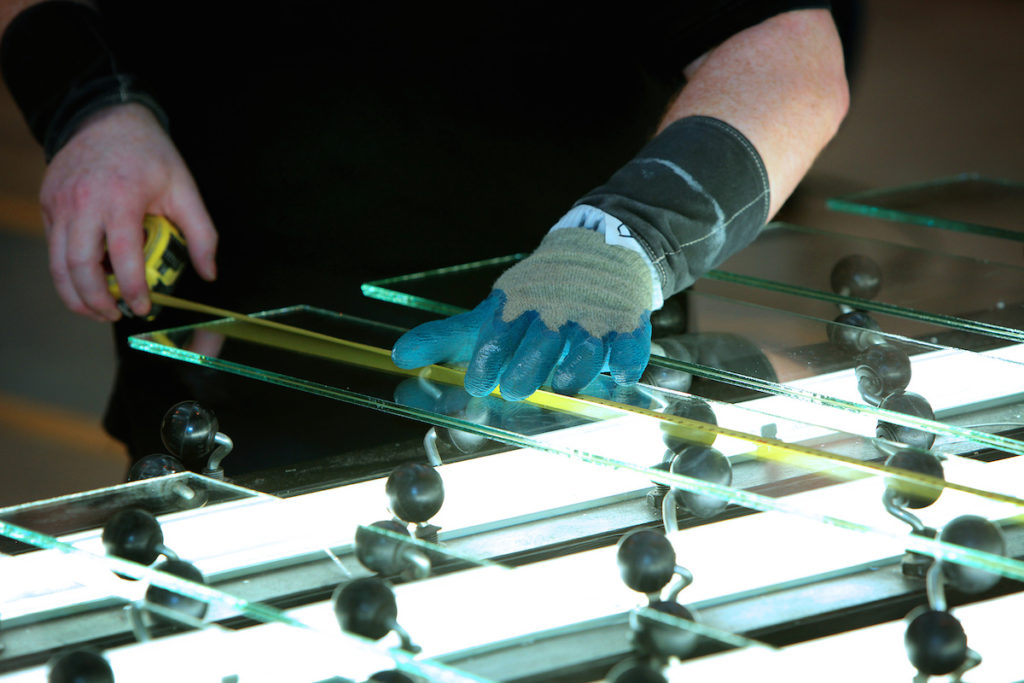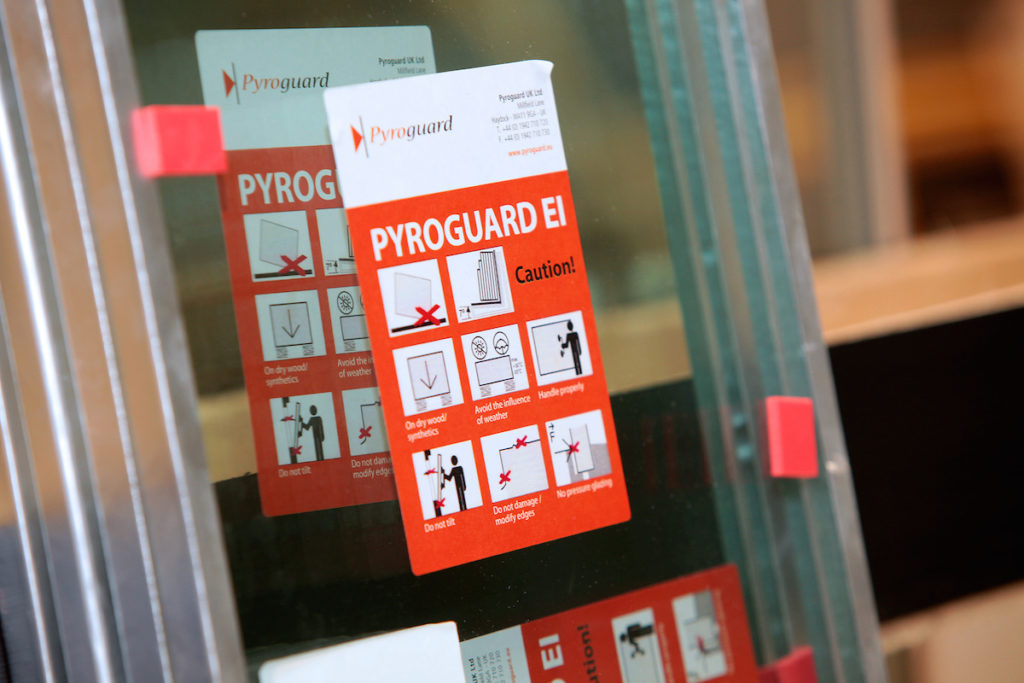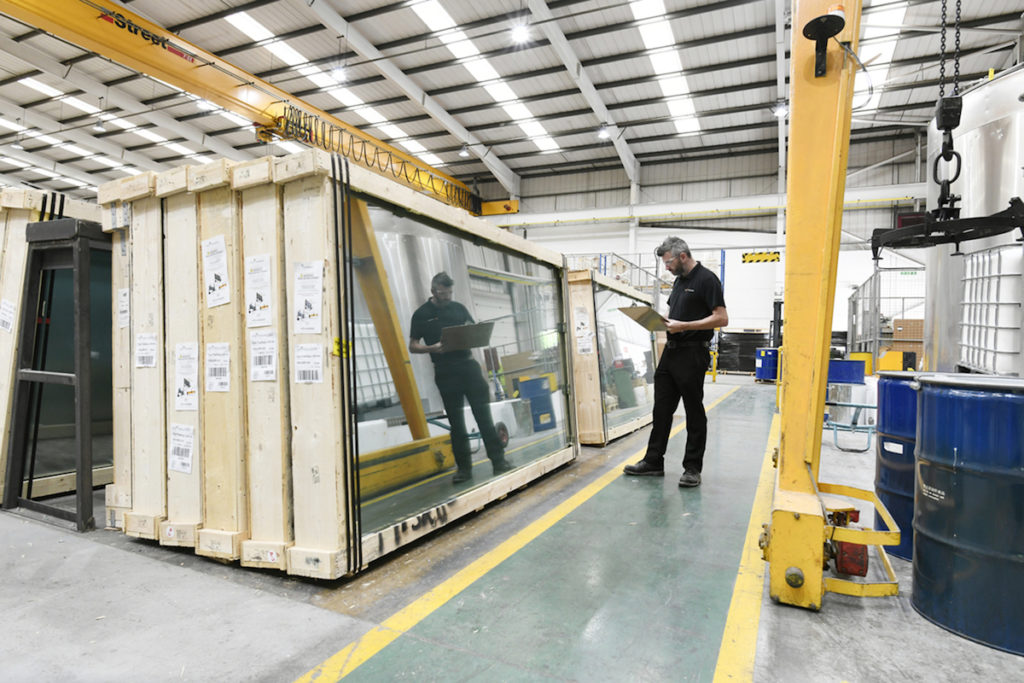Richard Ainsworth, Group Technical Director at international fire-resistant glass manufacturer Pyroguard, discusses the industry post-Grenfell and what local authorities should be considering when specifying fire-rated glass within their multi-occupancy buildings.
Two and a half years on from the Grenfell disaster and its effects are still being felt throughout the construction industry and society as a whole. The enormity of the tragedy prompted the Hackitt Review into Building Regulations and fire safety and also the public inquiry — from which the Phase One report was published back in October 2019. The sheer scale of Grenfell and the significant failings that were subsequently identified has led to much soul-searching within construction, with the industry criticised for its sometimes deficient and ignorant approach to fire safety. It is no wonder, therefore, that local authorities and housing associations are under increasing pressure when it comes to a multi-occupancy building’s fire protection and ensuring that the correct safety strategies are in place.
When studying the Building Regulations and Approved Document B: Fire Safety, compartmentalisation is a key part of a building’s passive fire protection, with fire barriers separating distinct areas within a building. The creation of these smaller compartments and layered pockets of fire resistance within a multi-occupancy building helps to ensure that, in the unfortunate event of a fire, it would be contained within a relatively small area, providing residents with the time and means to escape the building safely.

Fire-resistant compartments
There are several materials and products available to help construct such fire-resistant compartments, ensuring compliance with both Building Regulations and a local authority’s fire protection strategy. Fire-rated glass, that has been manufactured, specified and installed correctly, can be an integral part of constructing fire-safe compartments within social housing. Indeed, it can have numerous applications within multi-occupancy buildings, not restricted just to the obvious windows and doors, but also including internal partitions, fire corridors and curtain walling.
As well as confirming that the specified fire-rated glass has been tested to the required standards and is proven to perform as stated, local authorities should be considering what performance qualities they want from their fire glass. Often, specifiers may only look for proven resistance to flames and hot gases. However, heat resistance is another important area, particularly within high-rise, multi-occupancy buildings – indeed, temperatures within the Grenfell Tower on the 14th June 2017 reportedly reached around 1,000°C.
According to BS EN 13501-2, there are three different classifications of fire-rated glass to be aware of: E (Integrity), EW (Integrity & Radiation) and EI (Integrity & Insulation). Classification E offers effective protection from flames and smoke; EW works to partially reduce the amount of radiant heat transfer; and EI offers the highest level of protection from flames, smoke and heat.
When it comes to the specification stage of a multi-occupancy building project, a carefully designed combination of all three can often be the most effective choice, with each classification having its best-suited application. For example, E (Integrity) may be a good choice for inside fire-compartments, whereas, to protect compartment barriers or ensure the integrity of designed fire escape routes and corridors, EI would be the better choice. As an example, Pyroguard’s Protect glass is manufactured to achieve EI60 classification, providing at least one hour of protection against flames, smoke and heat, providing social housing residents with ample time to escape in the event of a fire.

Fire compartments
With high-rise multi-occupancy buildings often containing a large number of fire compartments, and with local authorities being heavily responsible for the safety of their residents, it is important that specifiers always liaise with a reputable and technically competent fire glazing manufacturer. Those with a dedicated technical service and library of independent test data can provide councils and housing associations with the confidence that high-quality, high-performance fire protection products are being installed within their residential buildings. Rightly so, the construction industry is now being far more stringent in ensuring that building materials possess a proven consistency of performance, with an emphasis on third-party certification, testing and assessment.
All of this said, it is imperative that local authorities also consider the proficiency of the installation. Sadly, a fire-rated glazing could be specified, which is manufactured correctly to the highest quality and has passed all the relevant testing standards; yet, if this is not installed correctly, then everything else automatically becomes irrelevant, as its fire protection will have been compromised. It is for this reason that many within the industry, including Pyroguard, are pushing for standardised, mandatory training schemes to be introduced amongst the passive fire protection industry, working to ensure that installations are being carried out by competent installers.
Nor is fire glass limited to just fire protection. There are also fire-rated glass products available that, in addition to protection against fire, also offer attack and impact resistance. Local authorities should be aware of this multi-functionality, particularly considering anti-vandalism schemes and household security initiatives, such as Secured by Design, and the additional benefits that fire-resistant glass could provide their social housing projects.
It is clear that attitudes towards fire safety have certainly changed within the glazing industry, with more attention rightfully being placed on the relevant testing and ensuring that a product will perform as stated by the manufacturer. With local authorities possessing a duty of care towards residents of social housing, being actively aware of the capabilities of fire-rated glass and its use within fire protection strategies is vital, in order to ensure the safety of a building’s occupants in the unfortunate event of a fire occurring.










